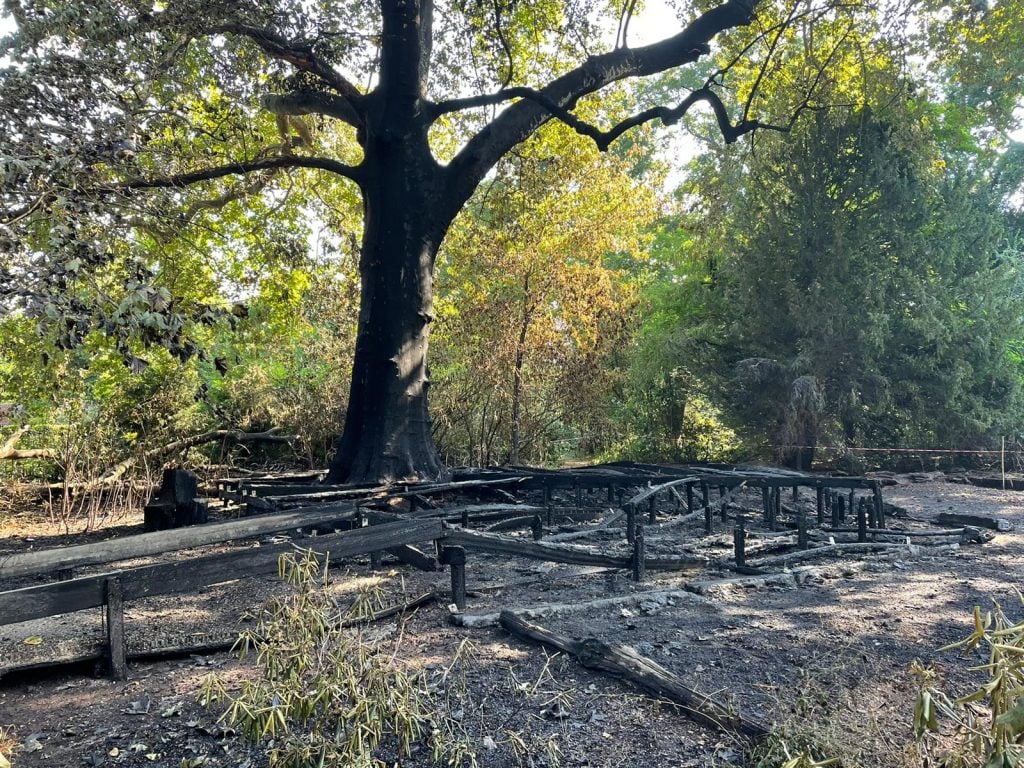
The climate is changing, and we are all going to notice the consequences, all over the world. There are plenty of plans to prepare for this or even to reverse the process. But what can you, as an alderman of a medium-sized city in the Netherlands, contribute? What is the impact of a climate measure on a local level? Rik Thijs, Alderman Climate & Energy in Eindhoven, takes us through his dilemmas, choices, and ambitions once a month.
Thursday night, July 18, a massive fire raged at the 260-year-old sycamore tree near Wasven in my city Eindhoven. The first ‘World Tree’ that could reach 1000 years seems to have been the target of arson. Many residents of Eindhoven were shocked. Immediately a fundraising campaign was started to save the tree. There is a chance that the tree will survive and still stand in 500 years.
The grief over the fire shows the value a tree can have. Not only for biodiversity and cooling our city but also emotionally. Underneath the tree were concerts, weddings, and funerals.
To me, the burning of this tree represents more. That we need to be careful with the greenery in our city and add trees instead. Adding trees also creates dilemmas. They don’t seem like significant issues, but I think it would be good to take you through the more minor dilemmas I have to deal with.

As an alderman for green space, I regularly have to decide on objections to felling permits. Residents want to cut down a tree in their garden or make a request for a tree cut in their street. From an individual point of view, this is understandable, but from a more significant social interest point of view, Eindhoven has a strict felling policy. We disapprove of cutting down trees when this is because they cause dirt or leaves on the car. Or when the trees block the sun for the solar panels. Sometimes people don’t understand that because solar panels are also a good development, right?
The value of existing trees often comes before other developments. Trees are our lungs in the city. Although there are, of course, exceptions. Especially when it comes to our major building projects. The credo is first to preserve the trees and otherwise compensate for green space in the immediate vicinity. To determine how much greenery should come back, we calculate the value of the tree.
Dilemmas
Dilemmas also arise with new greenery. For example, we are in the process of removing surplus paving. We then plant out green spaces so that our streets become greener, more biodiverse, and climate-proof. However, this sometimes leads to complaints. For example, people have to walk a few meters around the block with their groceries because a green strip has been realized in front of their door. Or when we plant trees in a treeless street. For each tree, you can think of a complaint: less light, falling leaves, view. Yet the great importance of a green climate adaptive city is that we must put the general interest first, rather than the individual interest, to keep the city livable, despite the resistance. Although we involve residents in plans, we cannot prevent opponents of green.
Hopefully, the tree at the Wasven is an example of all the thousands of trees we will plant in the coming years. That a tree can be more than a trunk with leaves. They are the nurseries of birds, insects, and other animals. It can take on an emotional meaning, they are the mini air conditioners that will keep our city cool in the future. So let’s hope that one of our city’s most significant air conditioners will still be cooling us in 500 years and can remain a place for joy and sorrow. In any case, that’s what trees do to me.

